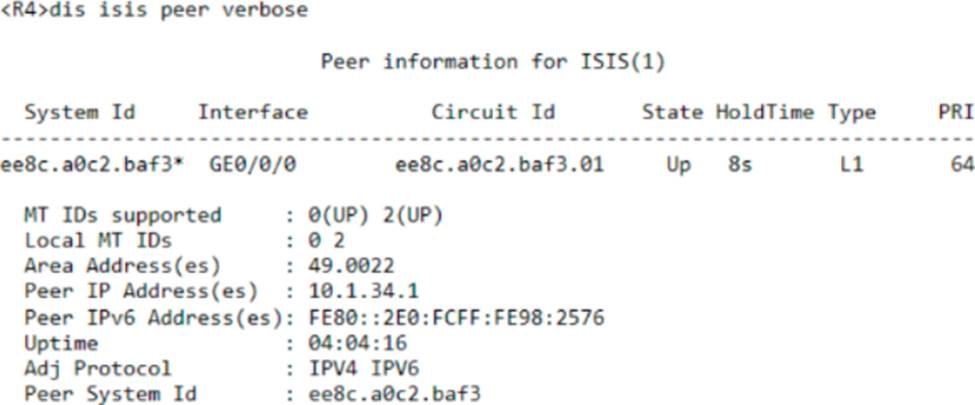Huawei H12-891_V1.0-ENU Real Exam Questions
The questions for H12-891_V1.0-ENU were last updated at Nov 18,2025.
- Exam Code: H12-891_V1.0-ENU
- Exam Name: HCIE-Datacom V1.0
- Certification Provider: Huawei
- Latest update: Nov 18,2025
For scenarios where advanced security functions such as UR filtering, IPS, security defense, and AV anti-virus need to be supported, and multi-link uplink needs to be supported, which of the following can be selected for the egress device?
- A . FW
- B . AC
- C . AP
- D . AR
In the firewall dual-machine hot standby scenario, when VGMP is working in load sharing mode, in order to avoid the return traffic being discarded because it does not match the session table entry in the scenario where the round-trip paths are inconsistent, what functions do the firewall need to enable?
- A . Session quick backup
- B . Manual batch backup
- C . Automatic backup
- D . Turn on BFD detection
An interface has the following configuration: isitimerhello5level-2. Which of the following descriptions is correct?
- A . The CSNP packet sending interval for Level-2 on this interface is 5s.
- B . The hello packet sending interval for Level- on this interface is 5s.
- C . The hello packet sending interval for Level -2 of this interface is 5s.
- D . The hello packet sending interval for Level-1 and Level-2 of this interface is both 5s.
In the scenario of dynamically establishing a VXLAN tunnel through BGP EVPN, which of the following descriptions about the role of BGP EVPN Type3 routing is wrong?
- A . Type3 routing transmits Layer 2 VNI and VTEP IP address information
- B . When the Type3 routing VTEP IP address is reachable at Layer 3, if the peer VNI is the same as the local end, create a head-end replication table for subsequent BUM packet forwarding.
- C . Type3 routing will carry L3 VNI
- D . If the VTEP IP address carried by the received Type3 route is reachable by Layer 3 routes, a VXLAN tunnel will be established to the opposite end.
Which of the following descriptions about labels is wrong?
- A . The LSP established by statically assigning labels can also be dynamically adjusted according to network topology changes without administrator intervention.
- B . The principle to be followed when manually assigning labels is that the value of the outgoing label of the upstream node is the value of the incoming label of the downstream node.
- C . LSP is divided into two types: static LSP and dynamic LS: Static LP is manually configured by the administrator, and dynamic LSP is dynamically established using label protocol.
- D . Dynamic SP is dynamically established through label publishing protocols, such as MP-BGP, RSVP-TE, and LDP
There are many types of token buckets. Which type of token bucket should be used for long-term burst traffic?
- A . Double bucket double speed token bucket
- B . Single bucket double speed token bucket
- C . Single bucket single speed token bucket
- D . Single bucket double speed token bucket
In a virtualized campus network scenario deployed through iMaster NCE-Campus, some key parameters need to be configured when configuring the authorization results for access authentication. Which of the following does not include?
- A . Authorized security groups
- B . Authorization result name
- C . Binding site
- D . Bind authentication rules
After the interface Sticky MAC function is enabled on the device, what is the number of MAC addresses learned by the interface by default?
- A . 10
- B . 15
- C . 5
- D . 1
Based on the information given in the figure, which of the following descriptions is correct?

- A . R4 and ee8c. a0c2. baf3 established IPv4 and IPv6 IS-IS neighbors.
- B . R4 does not have any IS-IS neighbors
- C . R4 and ee8c.a0c2.baf3 only established IPv4 IS-IS neighbor
- D . R4 and ee8c a0c2.baf3 have only established IPv6 IS-IS neighbors.
Which of the following descriptions of BGP/MPLS IP VPN network architecture is wrong?
- A . The P device only needs to have basic MPLS forwarding capabilities and does not maintain VPN related information.
- B . Under normal circumstances, CE devices are not aware of the existence of VPN, and CE devices do not need to support MPLS, MP-BGP, etc.
- C . The BGP/MPLS IP VPN network architecture consists of three parts: CE (Customer Edge), PE (Provider Edge) and P (Provider). PE and P are operator equipment, and CE is BGP/MPLS IP VPN user equipment.
- D . Sites can access each other through VPN, and a site can only belong to one VPN.
